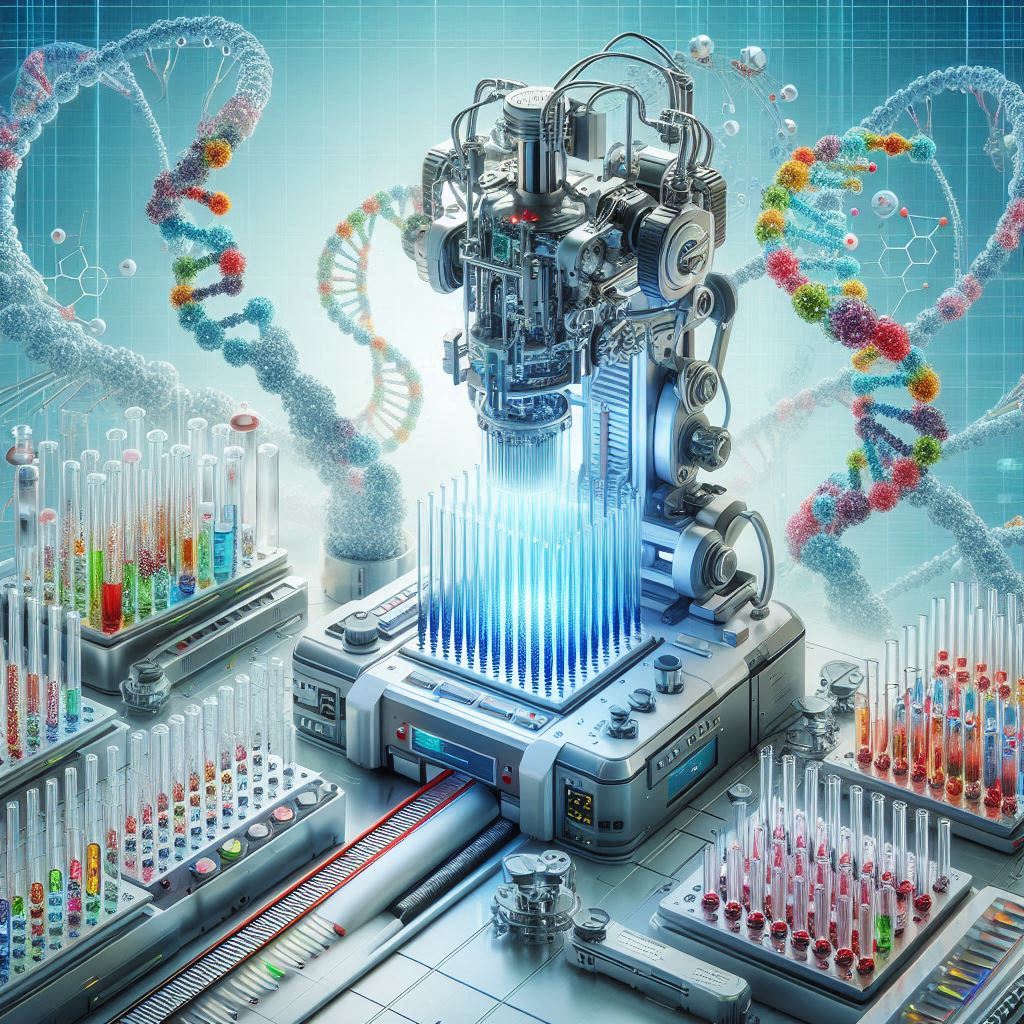The Screening Facility offers state-of-the-art support for medium throughput screening in drug discovery. This cutting-edge facility is uniquely equipped to streamline the identification and validation of potential therapeutic compounds.
Our facility provides access to advanced instrumentation for in vitro and in cell screening, high-precision liquid handling systems, and robotic support, as well as to diverse chemical libraries. These technologies enable researchers to conduct comprehensive and reliable screening processes, significantly accelerating drug discovery.
By integrating innovative technologies with extensive expertise, the Screening Facility is committed to supporting academic and industrial researchers in discovering new and effective therapies.
Applications
The technologies provided by the SF@DSF offer researchers powerful tools for identifying, optimising, and validating therapeutic candidates. By integrating real-time monitoring, label-free analysis, medium-throughput screening, and automation, drug discovery processes are faster, more efficient, and capable of providing deeper insights into the molecular mechanisms underlying disease and therapy.
The applications include, but are not limited to:
- Medium-throughput drug screening: screening large compound libraries to identify hit compounds that interact with specific targets or modulate cellular functions.
- Real-time cellular assays: monitoring dynamic cellular responses to compounds, including cell proliferation, migration, cytotoxicity, and drug efficacy in real-time.
- Biomolecular interaction studies: label-free analysis of biomolecular interactions, binding kinetics, and affinity measurements.
- Protein and antibody characterization: characterisation of the binding properties of antibodies, proteins, and small molecules.
- Automation of workflows: automatized repetitive tasks, including liquid handling and assay setup, streamline workflows, reduce human error, and increase throughput.
General Information
We provide full support for researchers throughout the screening process, ensuring optimal performance and results. Instructions are provided to users on the methodologies and the applications. The maintenance and operation of the equipment and the set-up of methods of analysis are coordinated by the staff in charge. The analysis can be performed directly by selected users, after specific training by a staff member (Certificate of Attendance), or by the staff, with or without the users. The use of the instruments, supported by the staff, is also allowed to some “super-users”, experts in some specific fields, who can give their contribution to scientific research in terms of innovation in the development of new methods and new applications.
Booking
Booking is mandatory. Trained users can book the instruments here. Non-expert users and external users must contact the staff for booking, as well as if an instrument is not open to online booking, or in case of long experimental sessions. Please note that the equipment is subject to usage charges: ask the staff about facility rates.
Consumables
We provide for free some basic consumables. Consumables specific to a certain equipment are provided and included in the usage charges. All other consumables must be brought independently by the users, or can be provided, in certain cases, with an additional cost. Ask the staff for more details.
Waste
Users are kindly requested to dispose of their waste on their own outside the facility. Please contact the staff if necessary.
Instrument Access
The instruments are (or will be) accessible with the Single Sign On system, using the credentials provided by the University. This allows also the user to use their own system for file sharing. It is forbidden to use any external device (e.g. USB-keys) and the installation of any software, unless allowed by the staff.
Contact
Facility Manager: Dr. Andrea Bertarello
Scientific Supervisor: Prof. Mattia Sturlese
Staff: Dr. Andrea Bertarello, Dr. Alessia Forgiarini
Phone: 049.8275841
Email: andrea.bertarello@unipd.it, researchfacilities.dsf@unipd.it
Opening hours: 9:00 a.m. – 5:00 p.m. Monday-Friday
Location : DSF – Building A, Via Marzolo 5 (Cod. Geotec: 00190 -1 057)
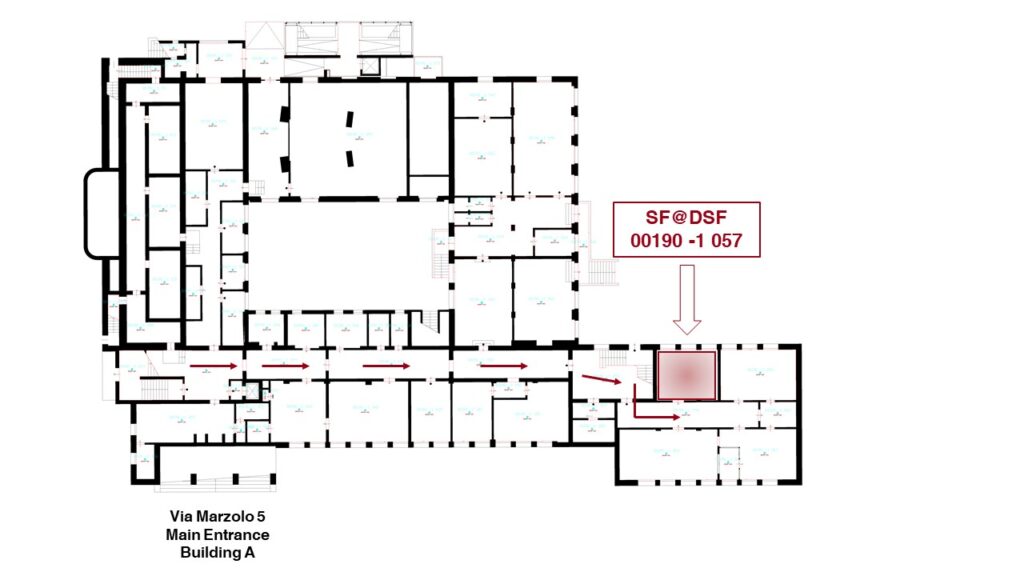
Equipment
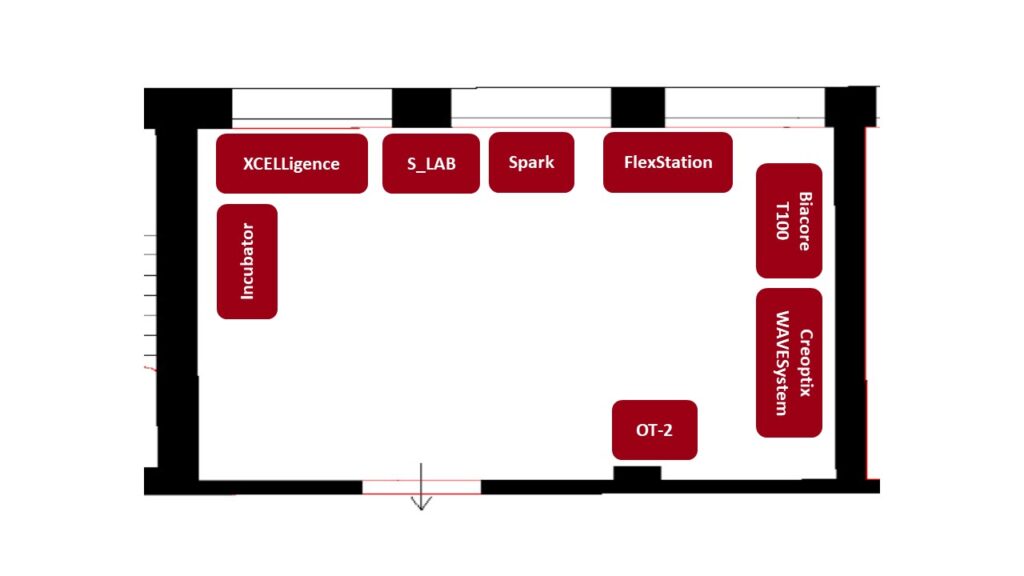
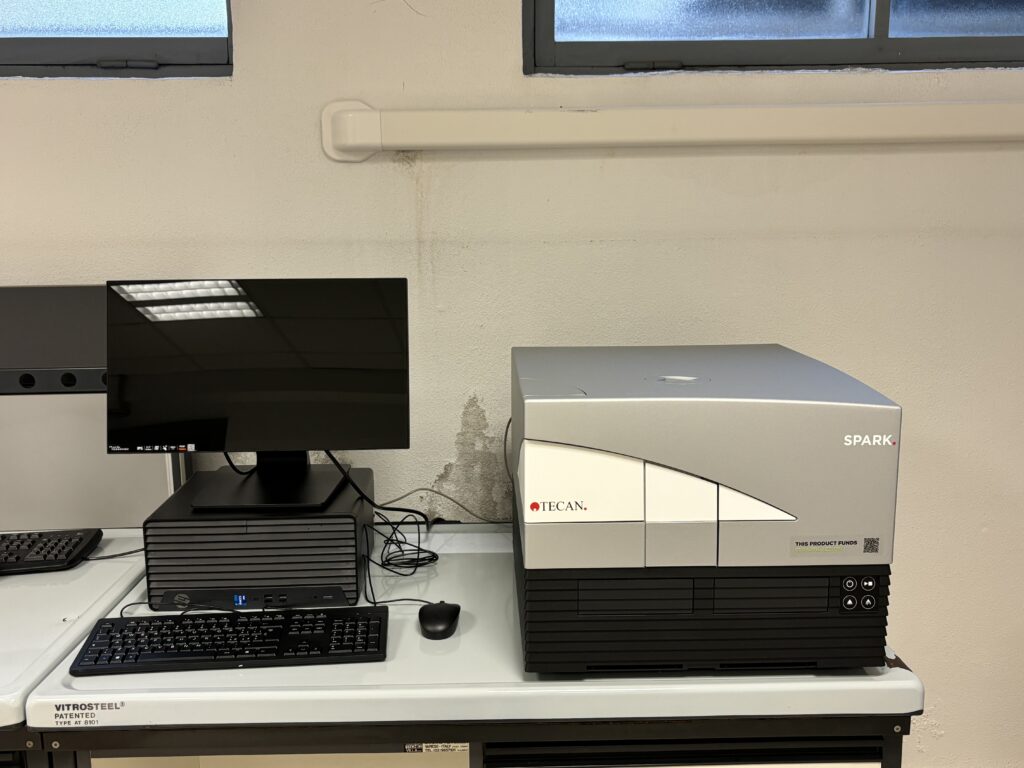
Spark (Tecan)
The Tecan Spark is a versatile multimode microplate reader used to perform a variety of assays including fluorescence, absorbance, and luminescence. It can be employed in screening applications to assess the activity of compounds across different biological assays, to evaluate the effect of potential drug candidates, or detect enzyme activity. It includes, among others, the unique Alpha Module, used for the detection of assays based on Alpha technology.
Manual ∙ Available Options ∙ Usage Notes
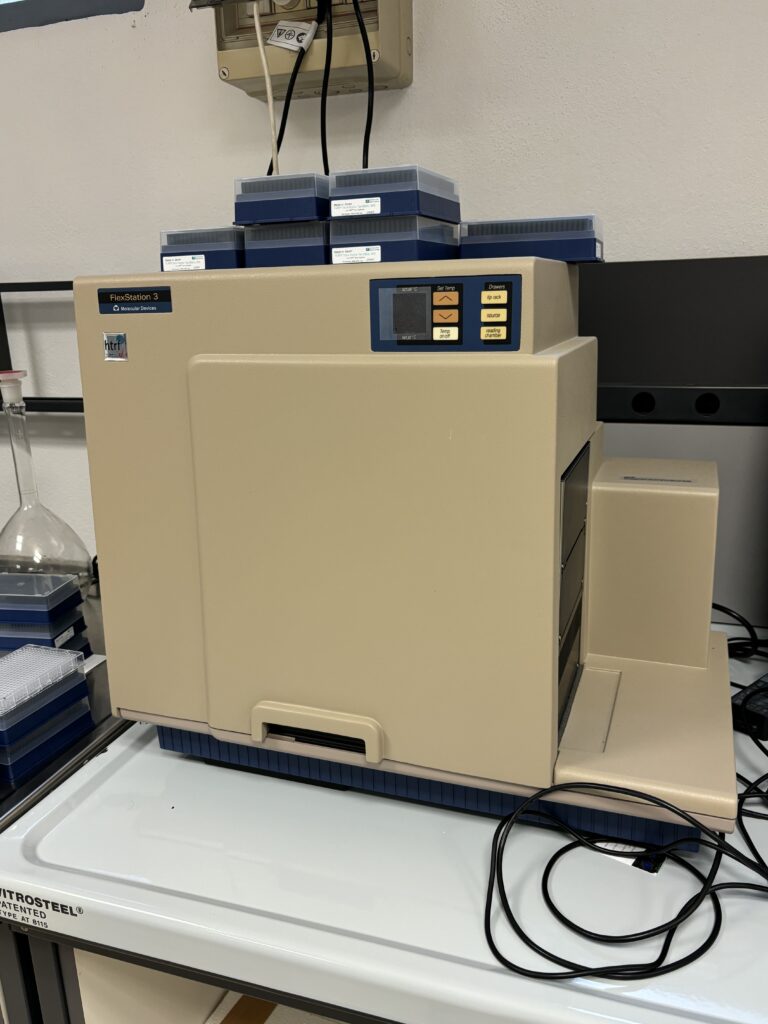
FlexStation 3 (Molecular Devices)
The FlexStation 3 Multi-Mode Microplate Reader measures absorbance, fluorescence intensity, fluorescence polarization, luminescence, and time-resolved fluorescence. Programmable liquid handling allows for perfectly timed, automated biochemical and cell-based assays. The reader adds up to three transfers of assay reagents from a 96- or 384-well source plate to enhance assay design using integrated fluidics. This microplate reader is ideal for time-resolved experiments, where dynamic processes such as ligand-receptor interactions or enzymatic activity need to be tracked in real-time.
Manual
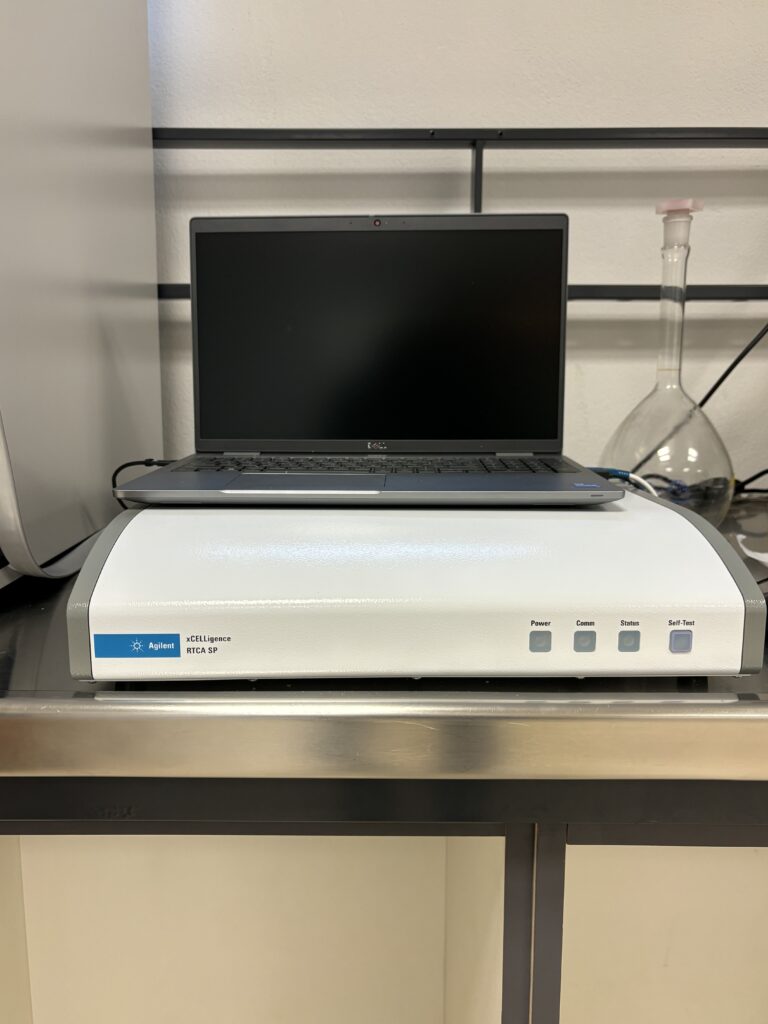
xCELLigence (Agilent)
The xCELLigence system provides real-time monitoring of cell health and behavior through impedance-based technology. This system allows for the continuous observation of cellular responses to various treatments without the need for traditional endpoints like fluorescence or colorimetric detection. Applications include cytotoxicity assays, cell adhesion, migration, and proliferation studies. The instrument can be connected to an incubator.
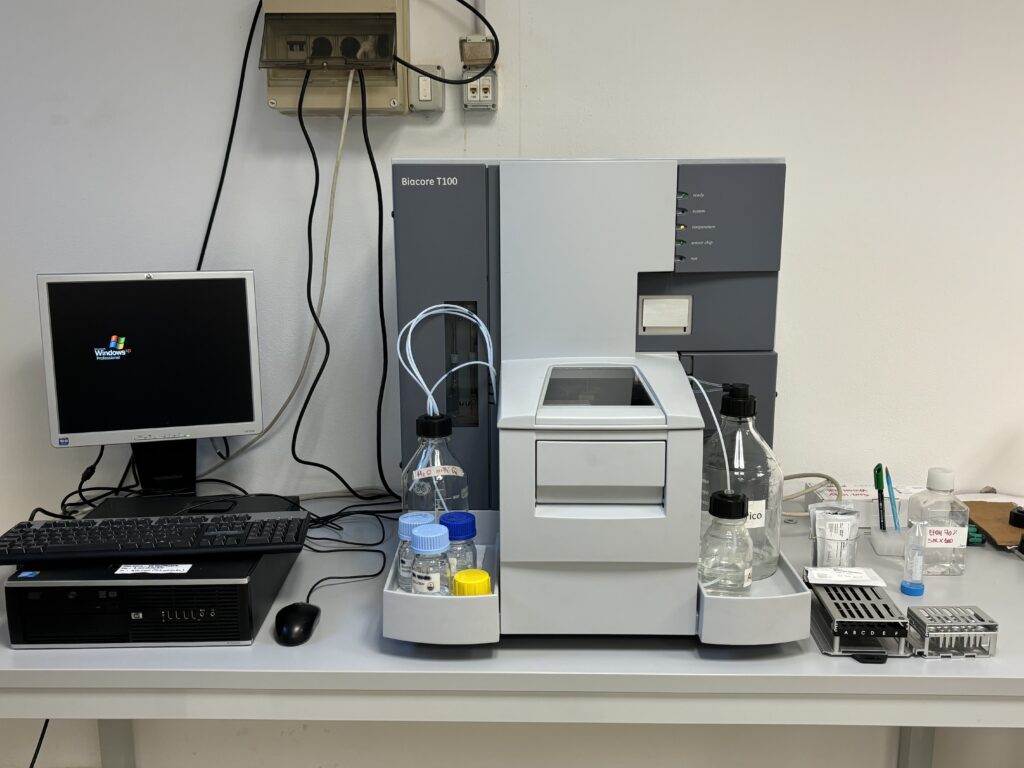
Biacore T100 (Cytiva)
The Biacore T100 is an advanced surface plasmon resonance (SPR) which can be utilized in the detection of biomolecular interactions, such as protein-protein, protein-DNA, or antibody-antigen interactions. This system can measure binding kinetics, affinity, and concentration of analytes in solution, making it invaluable in drug discovery for characterizing the binding of potential drug candidates to their target molecules.
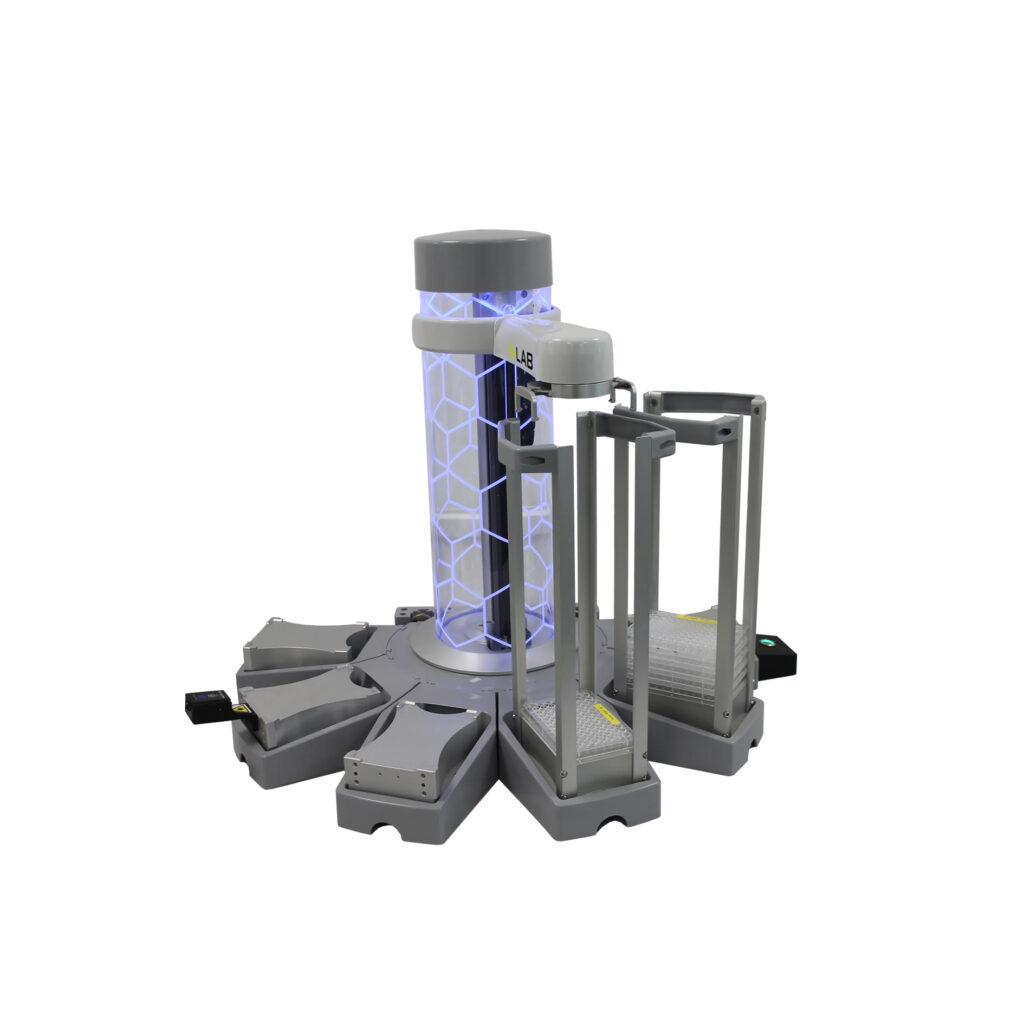
S-LAB Pro (PAA)
The S-LAB is a versatile system designed for the automation of plates handling. It is equipped with advanced robotics and can handle large volumes of assays with high precision and minimal manual intervention. Its ability to integrate seamlessly with other screening instruments makes it an essential component for large-scale screening campaigns, ensuring efficient data acquisition and reproducibility in experiments. It is currently coupled with the Tecan Spark plates reader.
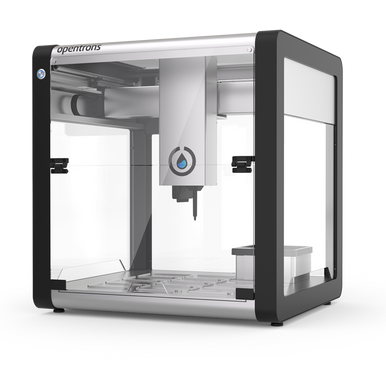
OT-2 (Opentrons)
The Opentrons OT-2 is a highly flexible, programmable liquid handler that allows for the automation of laboratory workflows. The OT-2 can be used to automate tasks such as sample preparation and compound dispensing, reducing time spent on repetitive manual tasks and improving experimental throughput.
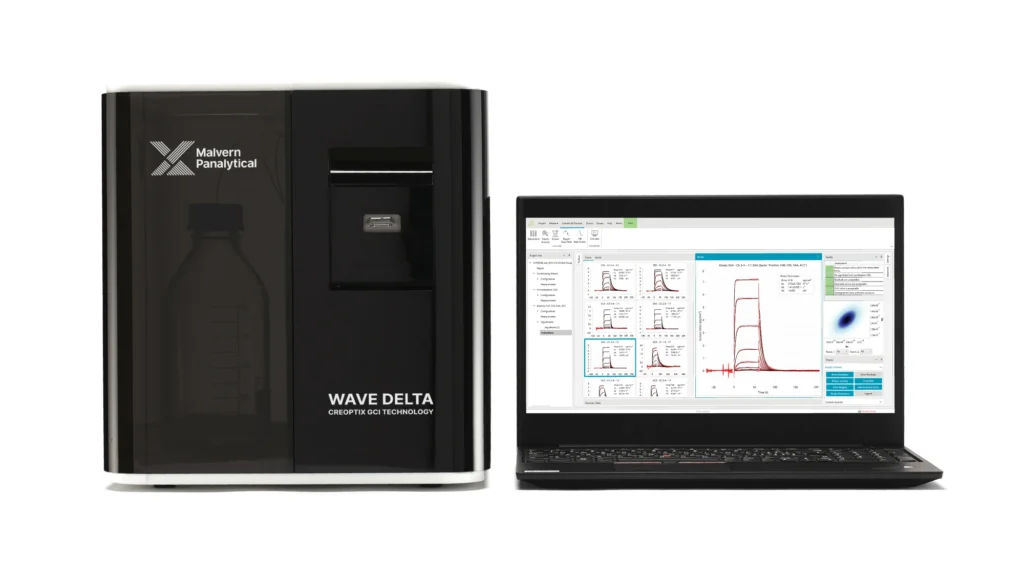
Creoptix WAVEsystem (Malvern Pananalytical)
The Creoptix WAVEsystem is an innovative platform for high-throughput label-free molecular interaction analysis. Using grating-coupled interferometry (GCI) technology, Creoptix provides real-time insights into the kinetics of biomolecular interactions. The WAVE system is particularly useful for studying small molecule binding, protein-protein interactions, and antibody characterization. It can be used to study, among others, crude samples, large ligand‑to‑analyte molecular weight ratios (up to >1000:1), binding affinities (KD) from low pM to low mM.
Manuals: Software, Hardware ∙ Usage Notes
Publications
Gozzi, M.; Malfacini, D.; Albanese, V.; Pacifico, S.; Preti, D.; Guerrini, R.; Calò, G.; Ciancetta, A. Probing Non Peptide Agonists Binding at Human Nociceptin/Orphanin FQ Receptor: A Molecular Modelling Study. RSC Med. Chem. 2024. https://doi.org/10.1039/d4md00747f.

